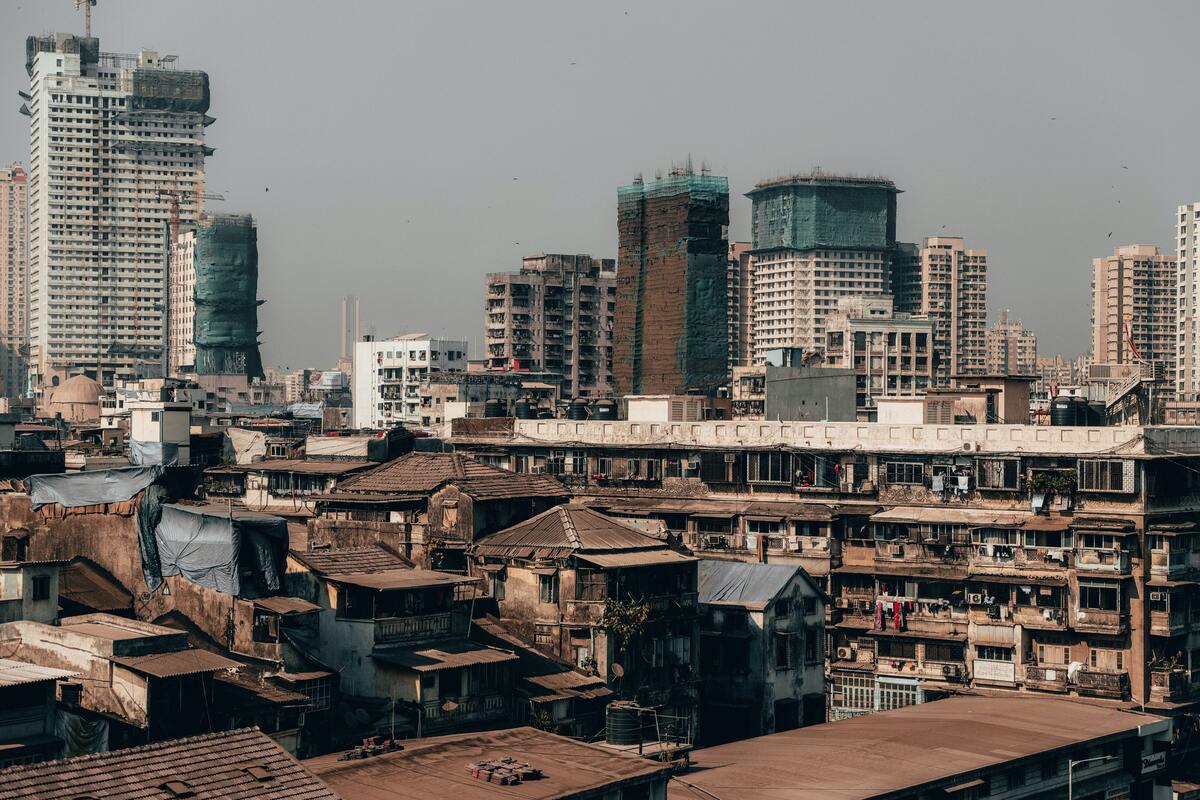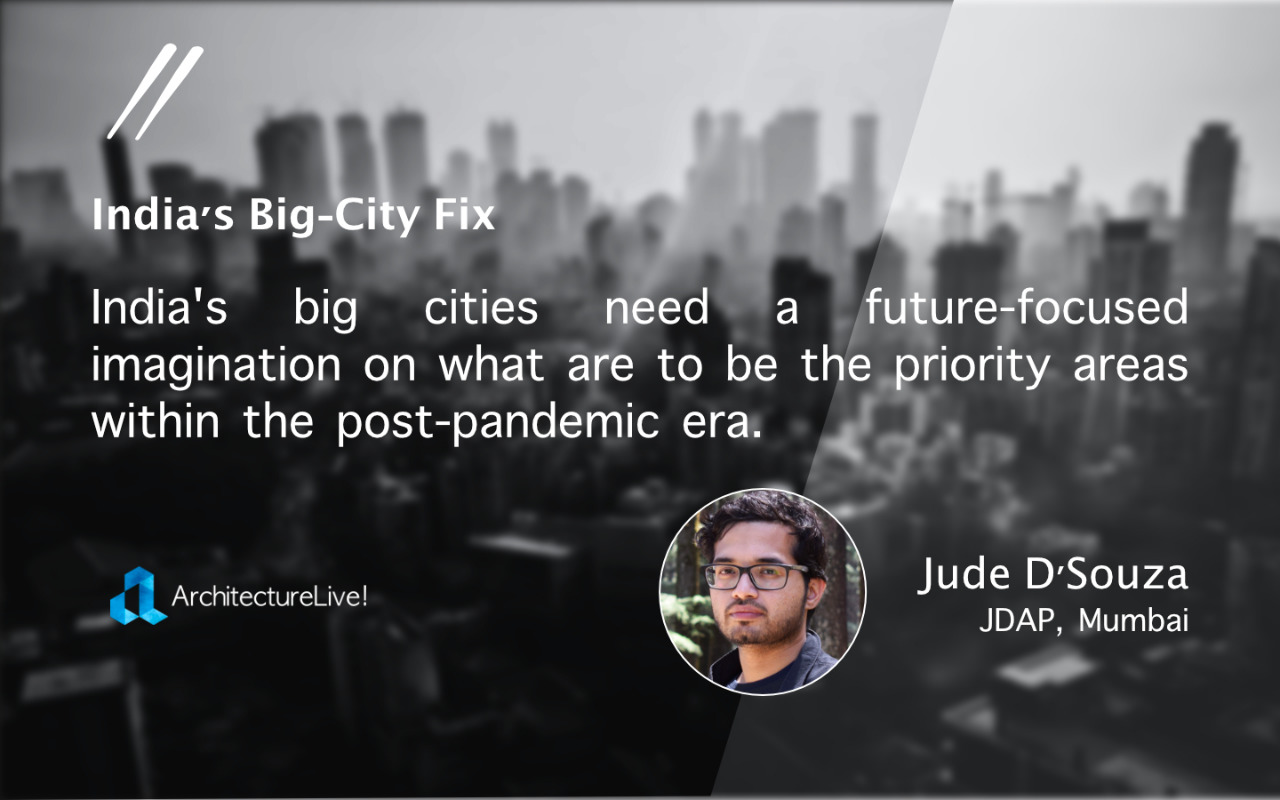“India’s big cities need a future-focused imagination on what are to be the priority areas within the post-pandemic era.”
As I write this, we are four months into the pandemic in this country, and our cities continue to hover in self-imposed limbo. Urbanity has seen crises come and go, but never in recent memory has it seen one that is as globally widespread, as deeply impactful, and as prolonged as this one. The nature of this crisis, where the very lifeblood of cities – of people coming together – is under threat, has led a number of urban practitioners and theorists to believe and propagate radical, tectonic shifts in our modern existence. Some others believe that this is against the fundamental nature of human endeavour and that we would pick up from where we left off, once there is a vaccine or a drug in sight.
What is undeniable though, is that in the face of an event that has had an impact such as this, doing nothing is simply not an option. Further, to rely on the natural resilience of our systems – whether economic, socio-political or infrastructural, to bounce back without any special effort denies the nature of these systems themselves. For they have been made by us, to begin with, and require conscious, intelligent effort in shaping them to deal with changing realities as a necessary condition of their continued existence.The impact of the crisis on India’s largest cities that are the powerhouses of its national economy, where life as it used to be before the pandemic is simply unimaginable now, is deep-rooted and brutally paralysing. A strategic plan for a country’s urban future cannot be based on applying First-World principles within a Third-World environment. For a country where 9 in 10 workers belong to the informal sector where daily wages are the common metric of earning, the real, physical economy is the one that really matters and not a virtual one. Therefore ‘solutions’ being bandied around within the urban and architectural discourse – from the digitization of the economy to the return of the privately-owned vehicle, to building homes with study rooms and balconies are not only out of touch with a large section of the populace but are also distractions from more fundamental challenges to urbanity that this pandemic has thrown up.
At the outset, some issues must be laid to rest. Firstly, urbanisation is both desirable and inevitable, and large urban centres would continue to remain important – though the extent of their value may shift. Secondly, the dawn of a new urban era, once we get through this crisis, is not a place we will get to with wide-eyed wonder and ‘positivity’. The conditions of this crisis are harsh and need our cities to be shown some tough love. It is a period that involves imaginations of the new when the means to get there are scarce and in short supply. Lastly, in an era where social fissures and emotive issues around identity have become the grist of our polity, all this talk on an alternate urban future remains hollow if we do not collectively fight for issues of substance over spectacle.
A major blow to the idea of our cities dealt by the pandemic is that related to density. Density in the public sphere understood as the (in)adequacy of public space available for individuals – seen in the packing of bodies in our transport networks, the jostling on our streets and markets, the sheer number of people within public open spaces – all that was accepted, as we tumbled from one disaster to the next, in a ‘life-goes-on’ vein. The density concern, at this time, cannot be wished away, and without being addressed head-on, shall at best lead to the large cities having extended recovery periods that their economies would be hard-pressed to sustain. At the worst possible outcome, large cities would have lost the best of their talents and workforce over the next few years to smaller urban centres that offer a more humane quality of life at present (that shall be the topic for another time). The concern around the adequacy of space in the private sphere, for a humanly acceptable standard of living, is another aspect that has been expressed by the millions of migrants who fled the cities for their villages and small towns. Cramped into shared dwellings with poor hygiene, natural light and ventilation, few of those who have physically built and serviced these cities are going to be eager to once again risk their lives to earn a living.
 India’s big cities need a future-focused imagination on what are to be the priority areas within the post-pandemic era. Too often, these imaginations involve ticking off all the right boxes, keeping all bases and constituencies covered. This approach may be useful from a business continuity perspective, but without a measurable, outcome-based agenda, an approach that is too broad-based often ends up lacking clear focus and is a recipe for failure in times of crisis. Goals that are based on tangible quality-of-life outcomes, that are focused, and that pack within them a whole spectrum of issues are ones that need to be articulated and pursued. Simply producing laundry lists of ‘good-to-haves’ or repeating banal cliches will not lead to any substantive improvement in such times. We need to be able to crystallise the key shifts that our cities need to make to retain their competitiveness, relevance, and long term sustainability into concrete goals that may be understood, deliberated and valued by various stakeholders – professionals, bureaucrats, citizens and the political leadership.
India’s big cities need a future-focused imagination on what are to be the priority areas within the post-pandemic era. Too often, these imaginations involve ticking off all the right boxes, keeping all bases and constituencies covered. This approach may be useful from a business continuity perspective, but without a measurable, outcome-based agenda, an approach that is too broad-based often ends up lacking clear focus and is a recipe for failure in times of crisis. Goals that are based on tangible quality-of-life outcomes, that are focused, and that pack within them a whole spectrum of issues are ones that need to be articulated and pursued. Simply producing laundry lists of ‘good-to-haves’ or repeating banal cliches will not lead to any substantive improvement in such times. We need to be able to crystallise the key shifts that our cities need to make to retain their competitiveness, relevance, and long term sustainability into concrete goals that may be understood, deliberated and valued by various stakeholders – professionals, bureaucrats, citizens and the political leadership.
Consider the trifecta of ‘roti, kapda, makaan’ that gave way to the ‘Sadak, bijli, paani’ genre of election rhetoric in India. Ordinary citizens are able to grasp and rally around these ideas as being fundamental to the promise that the state must deliver on. I would consider a similar approach for the bloated Indian megacity wobbling under the weight of legacy concerns and the current existential conundrum.
A minimum guarantee of well-being must be ensured for every urban Indian citizen that can be crystallised into a “30-60-90 Plan”. Under this plan, every urban citizen must be able to get from her home to her place of work in high quality, safe, and reliable public transport in under 30 minutes. She should have residential space of a home at no less than 60 square feet per capita in a healthy and safe environment. And she should have a minimum of 90 square feet per capita of public green open space within walking distance of her home.
A strategy to achieve these objectives would involve a raft of policy and planning measures so that these objectives are achieved within a medium-term horizon of say 5 years. If a home and workplace have to be within 30 minutes of each other by high-quality public transport, it means that not only do we need to look at the last-mile connectivity of transit networks, but also their spread and interconnectivity. It would also ease zoning regulations by allowing for micro-CBDs that are distributed along interconnected transit corridors rather than being artificially constrained into a few zones. If we are to scale up to achieve this standard within a reasonable timeline for cities to get back to their production levels, administrators need to ensure massive spending increases in systems such as bus transport networks to scale capacity quickly. High-speed rail connectivity that interface with inner-city metro lines also becomes a priority to have efficient linkages between distant suburbs and places of work and leisure within the city.
Similarly, making it mandatory to have a minimum of 60 square feet per capita of usable area for housing would mean that the minimum house sizes under the slum rehabilitation schemes would be at minimum 300 square feet for an average family. It would mean disallowing housing developments that are proven to have adverse effects on human health because of deficient light and ventilation. And once again, it would mean focusing on quality support infrastructure and social amenities that can support residential development in outer urban fringes if the inner cities cannot take any more homes at the stipulated minimum size and standard. This would definitely make it costlier for developers as their profit margins take a hit, but adding in contribution in a structured manner from the state and possibly also from residents can be one way of bridging this gap.
Lastly, just infrastructure and housing are insufficient in creating a minimum standard of urban living that a citizen of India’s cities can expect. There are several standards on infrastructure and amenity provision which are all made in good faith and with the best intentions. However, for the state and civic administrations to guarantee every single standard, given legacy conditions and a complex set of governance challenges is unreasonable to expect. For the cities to, however, guarantee to their citizens that there will be accessible and safe green open spaces to the extent of 90 sqft per capita at a neighbourhood level is a crucial component of ensuring liveability. With the lockdown, we had the urban poor who had stayed back in the cities having no space beyond the home to go to and the importance of gardens and maidans over malls and cinemas could not be starker. An audit of accessible public open spaces at a Ward level may point towards inadequacy of open space within certain pockets for which remedial measures would need to be taken. Sections of wards that do not meet this minimum criterion may not be permitted building licenses for further development until they are able to acquire and develop spaces for this ‘essential’ need. It might require a rethink of gated complexes with a luxury of open space while there are severely deficient sections within the same neighbourhood. Allowing developments that give up part of their plots or rooftops for public greens and other innovative ways may be employed to increase the overall green space availability.
Cities may develop their own version of this “30-60-90 Plan” to best address their contexts. It may all come to a cost. But doing right now doing nothing is the most expensive proposition.
Jude D’Souza is an Architect and Educator based in Mumbai, India. He runs his consultancy practice JDAP Design-Architecture-Planning based in Mumbai and Bangalore and is a Visiting Faculty at the Kamla Raheja Vidyanidhi Institute for Architecture [KRVIA] in Mumbai.








